Whether you have a huge plot of land or just some window-sill space, almost everyone can create and enjoy their own eco-friendly, sustainable garden. You just have to start small, learn as you go, and before you know it you’ll have the greenest of thumbs. Check out our favourite tips for starting a sustainable garden any time of year.
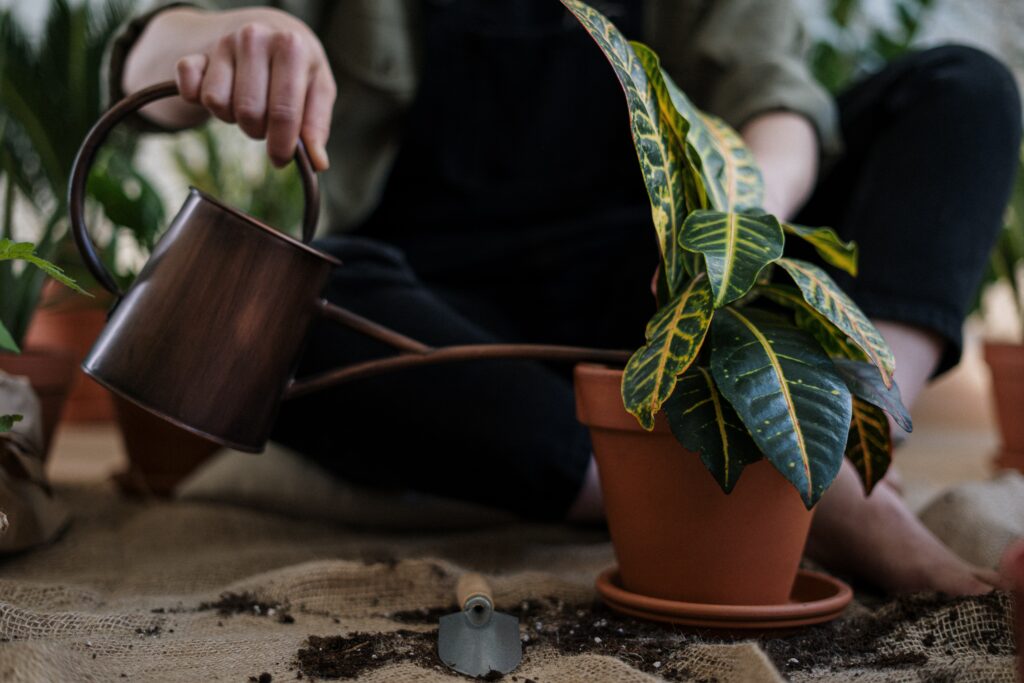
1. Water Your Plants With Rice Water
Rice water has many beneficial nutrients for your plants. When you wash your rice, the leftover water contains small amounts Nitrogen, Phosphorus, Potassium (NKP). NKP are the main ingredients in most fertilizers since they’re key for healthy plant development. The high starch content in rice water adds to the mix by providing energy for the plant’s growth. A little bit of rice water sprinkled on your seedlings in particular could give them a little boost.
Rice water can be stored for 5-7 days in the refrigerator and used to water your plants every 2-3 weeks. While rice water is beneficial for plants, overwatering with it may be harmful. The high starch content can attract pests or promote bad bacteria growth. So use sparingly and give your plants a rice water treat only once or twice a month.
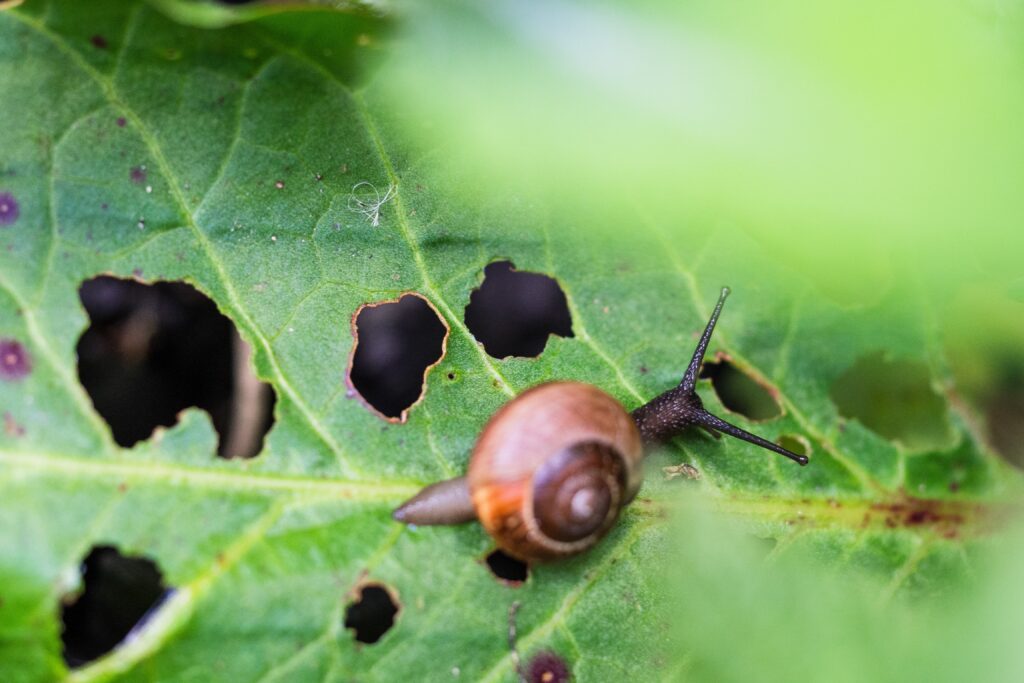
2. Avoid Toxic Pesticides
In 2019, the global pesticide market was worth almost 100 billion USD. Pesticides and insecticides line most garden stores, stacked full of chemicals promising to eliminate your pest problems. But these solutions don’t just harm plant pests, they can be detrimental to other animal life, you, and the environment. Run-off water from pesticides enters soil and waterways, polluting and killing other bacteria and animal life. Using pesticides can be particularly harmful to bees, impacting their reproduction, navigation and memory.
By their nature pesticides are going to be a bit toxic, at the very least to the pests you’re trying to get rid of. But if you need to get rid of pests, start with the least toxic method possible first. Botanical insecticides have ingredients extracted from plants like Capsaicin, Allicin (Garlic) and Neem. They can be an effective, low toxic way to repel insects. Practicing techniques like crop rotation, avoiding overhead irrigation and proper plant spacing can also help with pest management.
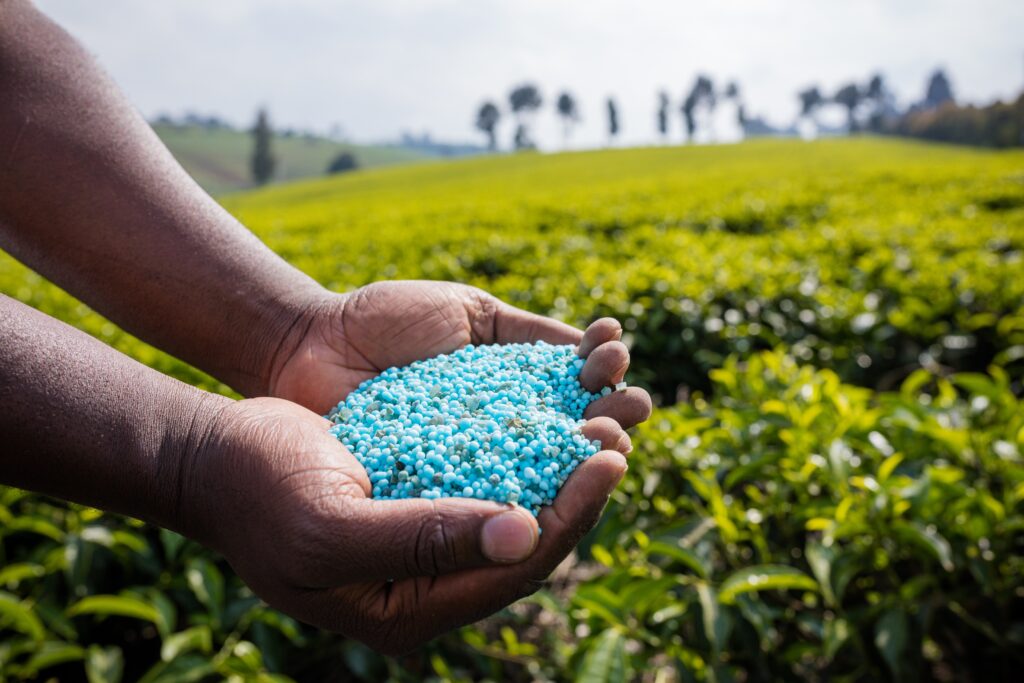
3. Avoid Synthetic Fertilizers
Synthetic, or chemical, fertilizers contain “man made” nitrogenous or phosphatic fertilizer materials, usually taken from by-products of the petroleum industry. They’re effective at giving plants a quick nutrient boost but their impacts aren’t long lasting. Most synthetic fertilizers need to be reapplied regularly with little to no nutrients benefiting the soil. And in some cases, overusing chemical fertilizers can have the opposite effect and burn your plants. On top of that, the production of ammonia (used in huge quantities in chemical fertilizers) is responsible for 1-2% of global greenhouse emissions.
For more on industrial greenhouse emissions, check out Which Industries are the Most Environmentally Damaging?
On the other hand, organic fertilizers have the same elements as synthetic fertilizers but they’re derived from once-living organisms. One of the key differences in the effects of organic versus synthetic fertilizers is their impact on the soil. Organic fertilizers are slow releasing with the ability to improve soil structure, increase drainage and nutrient retention. Avoiding synthetic fertilizers and opting for organic helps create a more sustainable garden for your plants and the environment.
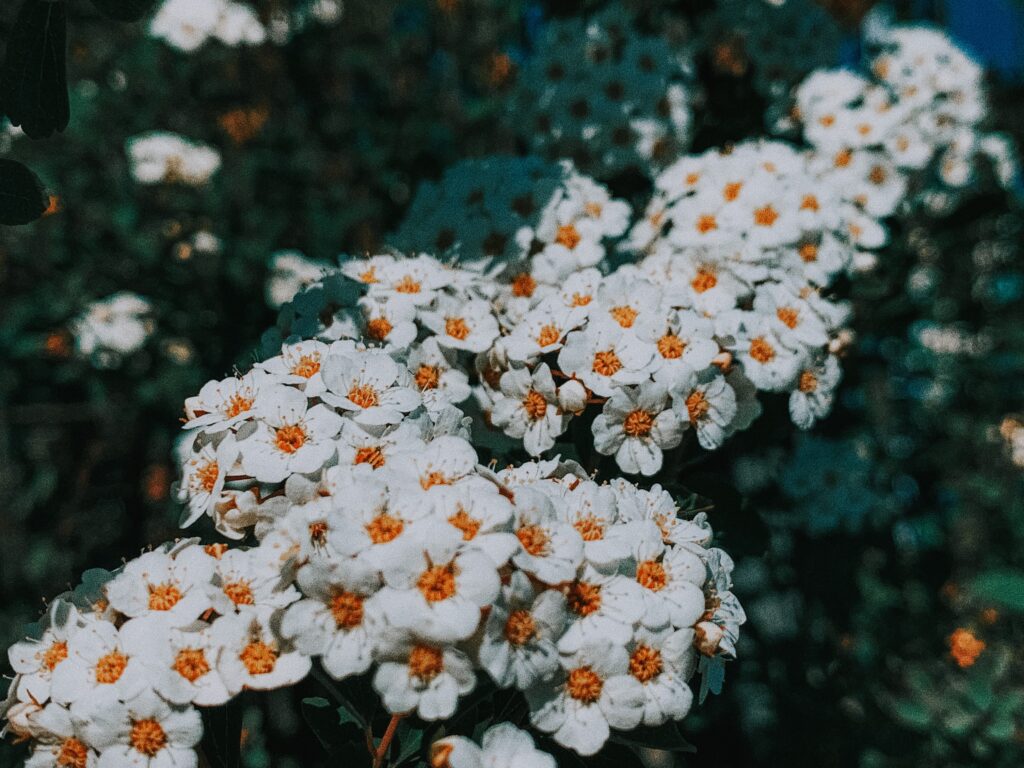
4. Plant Native Species
Each area has its own native plants. Native plants occur in a region naturally and haven’t been brought in from somewhere else. They’re key to a healthy ecosystem, providing habitats and sustenance for insects, birds and other animals.
Unfortunately, most residential yards in the US are turf lawn, covering 40 million acres in total. Canada’s in a similar boat with 6.2 million lawns. Lawns are harmful to the environment through high energy usage, toxic chemical pesticides and fertilizers and high water usage. In addition, they remove crucial plant species from an area disrupting the food web and ecosystem. Planting native species in your garden can help restore your area’s ecosystem. They provide a home and food source for essential microorganisms, pollinators and other animals.
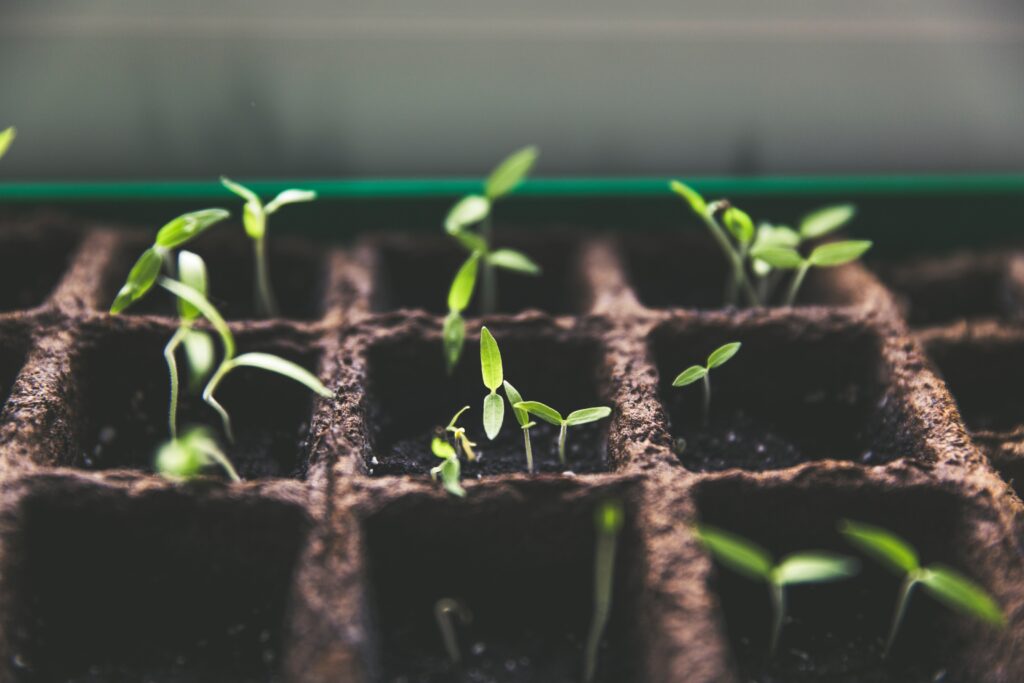
5. Use Sustainable Plant Pots
Last on our list of tips for starting a sustainable garden is to use sustainable plant pots. Plastic dominates the plant pot industry. Pots made from plastic are accessible, affordable and durable. But they also contribute an estimated 1.66 billion pounds of plastic to the environment every year. Unfortunately, most plastic plant pots aren’t recycled with 98% ending up in landfills. Those made from polypropylene typically aren’t recycled at all.
But there are more eco-friendly alternatives available. For seedlings, egg cartons can be used and composted afterwards. Clay or fabric pots can work well for herbs and flowers. Hemp sacks can be used instead of plastic pots for larger vegetables like potatoes and carrots.
Sustayn is designed to present the most useful recommendations for environmentally friendly approaches and items. We update links when possible, but note that links can be broken and subject to change.
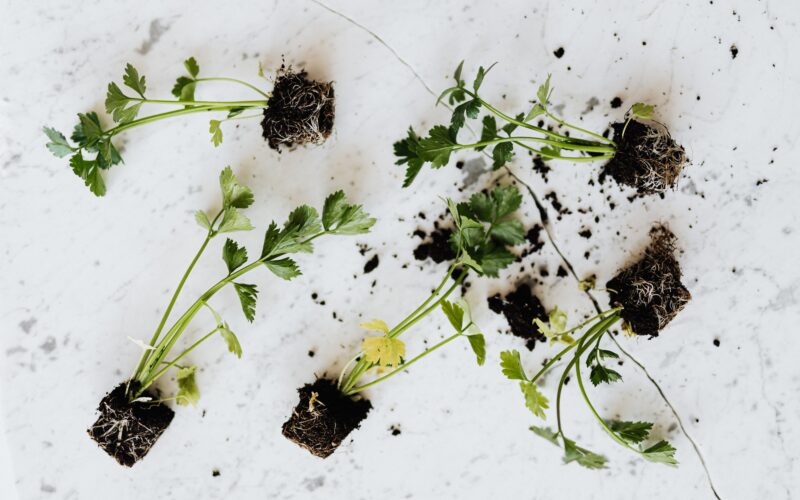


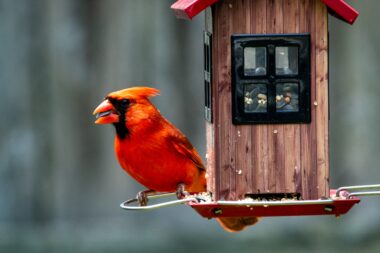
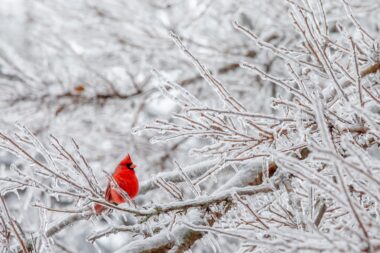




161 comments
I like what you guys are up too. Such smart work and reporting! Keep up the superb works guys I’ve incorporated you guys to my blogroll. I think it will improve the value of my site 🙂
What’s Happening i’m new to this, I stumbled upon this I’ve found It positively useful and it has helped me out loads. I hope to contribute & help other users like its helped me. Good job.
You could definitely see your expertise within the paintings you write. The sector hopes for even more passionate writers such as you who are not afraid to mention how they believe. At all times go after your heart. “The most profound joy has more of gravity than of gaiety in it.” by Michel de Montaigne.
I was just looking for this info for some time. After 6 hours of continuous Googleing, finally I got it in your web site. I wonder what is the lack of Google strategy that don’t rank this kind of informative web sites in top of the list. Usually the top sites are full of garbage.
Glad to be one of the visitors on this awing internet site : D.
Thanks for the good writeup. It actually used to be a amusement account it. Look complicated to far brought agreeable from you! However, how could we communicate?
Awesome post.Really looking forward to read more. Really Great.
It’s going to be ending of mine day, however before end I am reading this wonderful post to improve my knowledge.
hydroxychloride medicine plaquenil pill is hydroxychloroquine safe
whoah this blog is wonderful i love reading your articles. Keep up the great work! You know, a lot of people are hunting around for this information, you can aid them greatly.
Well I sincerely enjoyed reading it. This article offered by you is very constructive for good planning.
Very neat blog.Really looking forward to read more. Awesome.
Awesome article.Really thank you! Cool.
Thanks for sharing, this is a fantastic blog post. Much obliged.
Say, you got a nice blog.Really thank you! Really Cool.
I value the blog.Thanks Again. Want more.
I do not harbor which i couldn’t eliminate other individuals’ errors when it come to.
I really appreciate this post. I¡¦ve been looking everywhere for this! Thank goodness I found it on Bing. You have made my day! Thank you again
Thanks for some other excellent post. Where else may just anybody get that kind of info in such an ideal manner of writing? I have a presentation next week, and I’m at the look for such information.
Hello there, just became alert to your blog through Google, and found that it’s really informative. I’m gonna watch out for brussels. I’ll be grateful if you continue this in future. Numerous people will be benefited from your writing. Cheers!
Hi friends, its impressive paragraph concerning tutoringand entirely defined, keep it up all thetime.
สาวกผี สาวกหงส์ สาวกสิงห์ สาวกเรือ สาวกไก่ สาวกจิ้งจอก ไม่ว่าคุณจะเป็นสาวกไหนก็ตาม UFABET ขอเป็นส่วนหนึ่งในการเปลี่ยนสิ่งที่คุณถูกใจเป็นรายได้ ด้วยการยกคาสิโนมาไว้ให้คุณพนันบอลออนไลน์ได้อย่างง่ายๆกันเลยขอรับ
Woulld you bbe enthusiastic about exchangging links?
This is a topic that is near to my heart… Take care! Where can I find the contact details for questions?
I enjoy what you guys tend to be up too. This sort of clever work and reporting!Keep up the great works guys I’ve added you guys to my personal blogroll.
Very efficiently written post. It will be valuable to anyone who utilizes it, including me. Keep doing what you are doing – can’r wait to read more posts.
A round of applause for your blog post.Really thank you! Fantastic.
whoah this blog is excellent i love reading your articles. Stay up the good work! You know, many people are searching round for this information, you could aid them greatly.
Hi i am kavin, its my first occasion to commentinganywhere, when i read this paragraph i thought i could also make comment dueto this brilliant paragraph.
Very good article post.Thanks Again. Much obliged.
Excellent goods from you, man. I have understand your stuff previous to and you’re just extremely fantastic. I actually like what you have acquired here, certainly like what you’re stating and the way in which you say it. You make it enjoyable and you still take care of to keep it smart. I can not wait to read much more from you. This is actually a tremendous site.
Thank you for some other magnificent article. Where else could anyone get that type of information in such a perfect approach of writing? I’ve a presentation subsequent week, and I’m on the search for such info.
I have read so many posts regarding the blogger lovers except this post is truly apleasant post, keep it up.
A motivating discussion is worth comment. I do believe that you should write more about this issue, it might not be a taboo subject but usually people do not discuss such issues. To the next! Cheers!!
Well I really liked studying it. This post provided by you is very constructive for proper planning.
Greetings from Carolina! I’m bored at work so I decided to check out your site on my iphone during lunch break. I really like the info you present here and can’t wait to take a look when I get home. I’m amazed at how fast your blog loaded on my mobile .. I’m not even using WIFI, just 3G .. Anyways, superb blog!
Good day! Would you mind if I share your blog with my myspace group? There’s a lot of people that I think would really enjoy your content. Please let me know. Thank you
Good post and right to the point. I don’t know if this is actually the best place to ask but do you people have any thoughts on where to employ some professional writers? Thanks 🙂
I’m not sure where you are getting your information, but good topic. I needs to spend some time learning more or understanding more. Thanks for excellent info I was looking for this info for my mission.
The subsequent time I read a weblog, I hope that it doesnt disappoint me as much as this one. I mean, I know it was my choice to learn, however I really thought youd have one thing fascinating to say. All I hear is a bunch of whining about one thing that you may fix should you werent too busy on the lookout for attention.
We’re a group of volunteers and opening a new scheme in our community. Your site offered us with valuable information to work on. You have done a formidable job and our entire community will be thankful to you.
Woah! I’m really digging the template/theme of this website. It’s simple, yet effective. A lot of times it’s challenging to get that “perfect balance” between superb usability and visual appearance. I must say you have done a superb job with this. Additionally, the blog loads extremely fast for me on Internet explorer. Superb Blog!
My brother suggested I might like this blog. He was entirely right. This post actually made my day. You cann’t believe just how a lot time I had spent for this information! Thank you!
Have you ever thought about publishing an e-book or guest authoring on other sites? I have a blog centered on the same information you discuss and would really like to have you share some stories/information. I know my audience would appreciate your work. If you are even remotely interested, feel free to send me an email.
Howdy! This post could not be written any better! Looking at this post reminds me of my previous roommate! He constantly kept preaching about this. I will forward this post to him. Pretty sure he will have a great read. I appreciate you for sharing!
Its such as you read my thoughts! You seem to grasp a lot approximately this, like you wrote the ebook in it or something. I think that you simply can do with a few to drive the message home a bit, however other than that, that is magnificent blog. A great read. I will certainly be back.
Thanks a lot for giving everyone a very terrific possiblity to check tips from this blog. It’s usually so good and as well , jam-packed with a lot of fun for me personally and my office peers to visit your website at the very least thrice in a week to find out the new tips you have. And of course, I’m so at all times pleased considering the unique strategies served by you. Some two ideas in this article are rather the most effective we’ve ever had.
ivermectin online pharmacy – ivermectin tablets order
It?¦s actually a great and useful piece of information. I am happy that you simply shared this useful information with us. Please keep us up to date like this. Thank you for sharing.
I know this if off topic but I’m looking into starting my own blog and was curious what all is needed to get set up? I’m assuming having a blog like yours would cost a pretty penny? I’m not very internet savvy so I’m not 100 certain. Any recommendations or advice would be greatly appreciated. Thank you
I just couldn’t depart your website before suggesting that I actually enjoyed the standard info a person provide for your visitors? Is gonna be back often in order to check up on new posts
Ahaa, its good conversation concerning this paragraph here at this blog, I have read all that, so nowme also commenting at this place.
What an remarkable manner of taking a look at points.
Really appreciate you sharing this blog article.Thanks Again. Really Great.
It’s difficult to find experienced people on this subject, but you seem like you know what you’re talking about! Thanks
Normally I do not learn post on blogs, but I wish to say that this write-up very pressured me to take a look at and do it! Your writing style has been surprised me. Thank you, very great article.
Muchos Gracias for your blog article.Really thank you! Awesome.
I do consider all the ideas you’ve introduced to your post. They’re really convincing and will certainly work. Still, the posts are too short for novices. May just you please extend them a little from next time? Thanks for the post.
Thanks for sharing, this is a fantastic article.Thanks Again. Much obliged.
Excellent way of explaining, and fastidious paragraph to obtain facts concerning my presentation focus, which i am going to convey in institution of higher education.
Im grateful for the blog article.Really looking forward to read more. Fantastic.
Hi I am so happy I found your weblog, I really found you by mistake, while I was browsing on Yahoo for something else, Regardless I am here now and would just like to say many thanks for a tremendous post and a all round interesting blog (I also love the theme/design), I don’t have time to read it all at the moment but I have book-marked it and also added your RSS feeds, so when I have time I will be back to read a great deal more, Please do keep up the superb job.
A lot of what you mention happens to be astonishingly precise and that makes me ponder why I had not looked at this in this light before. This particular piece truly did turn the light on for me as far as this particular subject goes. Nonetheless at this time there is just one issue I am not too comfortable with so while I make an effort to reconcile that with the central idea of the point, let me observe just what all the rest of the readers have to point out.Very well done.
Very good written post. It will be valuable to anyone who utilizes it, including me. Keep doing what you are doing – for sure i will check out more posts.
Regards, Valuable stuff!how to write a literary essay dissertation writing services cover letter writing services
Why visitors still make use of to read news papers when in this technological globe the whole thing is existing on net?
ed medications comparison rx online india – best canadian online pharmacy
Does your site have a contact page? I’m having trouble locating it but, I’d like to send you an e-mail. I’ve got some creative ideas for your blog you might be interested in hearing. Either way, great site and I look forward to seeing it develop over time.
I really enjoy the article post.Thanks Again. Really Cool.
Awesome article post.Really thank you! Great.
I have fun with, lead to I discovered just what I was looking for.You’ve ended my 4 day long hunt! God Bless you man. Have a nice day.Bye
Thanks for sharing, this is a fantastic blog article. Fantastic.
very good post, i certainly love this web site, keep on it
Thank you for your blog. Fantastic.
I think this site has got some real excellent information for everyone. “He is able who thinks he is able.” by Buddha.
Pretty nice post. I just stumbled upon your weblog and wanted to mention that I’ve really enjoyed surfing around your blog posts. After all I’ll be subscribing for your rss feed and I hope you write again very soon!
hello!,I like your writing very much! percentage we keep in touch extraabout your article on AOL? I require an expert on thisspace to solve my problem. Maybe that’s you! Taking a lookahead to see you.
I loved your blog.Thanks Again. Awesome.
Im grateful for the blog. Will read on…
Thanks for sharing, this is a fantastic blog article.
I have read several good stuff here. Certainly worth bookmarking for revisiting. I wonder how much effort you put to create such a excellent informative web site.
I truly appreciate this blog post.Thanks Again. Much obliged.
I cannot thank you enough for the article. Really Great.
Appreciate you sharing, great post.Thanks Again. Great.
I blog quite often and I truly appreciate yourinformation. This great article has really peaked myinterest. I’m going to bookmark your blog and keep checking for new details about oncea week. I opted in for your Feed too.
It’s hard to come by knowledgeable people for this topic, however, you sound like you know what you’re talking about!Thanks
Wow, fantastic weblog structure! How lengthy have you ever been blogging for? you made running a blog look easy. The entire look of your website is fantastic, as neatly as the content material!
WOW just what I was looking for. Came here by searching for 비트코인믹싱
I used to be more than happy to find this net-site.I wished to thanks to your time for this wonderful learn!! I positively having fun with each little little bit of it and I have you bookmarked to check out new stuff you weblog post.
Excellent blog you’ve got here.. It’s hard to find quality writing like yours nowadays. I seriously appreciate individuals like you! Take care!!
whoah this blog is excellent i like studying your articles.Stay up the great work! You realize, lotsof individuals are looking around for this information, youcan aid them greatly.
I really like and appreciate your article post.Really looking forward to read more. Keep writing.
Good article. I’m going through a few of these issues as well..
I love looking through an article that can make men and women think. Also, thanks for permitting me to comment!
I appreciate you sharing this blog post.Much thanks again.
It¡¦s in point of fact a great and useful piece of information. I¡¦m happy that you simply shared this useful info with us. Please stay us up to date like this. Thanks for sharing.
I loved your blog post.Thanks Again. Really Cool.
I am so grateful for your blog post.Much thanks again. Keep writing.
I’m truly enjoying the design and layout of your blog.It’s a very easy on the eyes which makes it much more enjoyable for me tocome here and visit more often. Did you hire out a designer to create your theme?Great work!
Fantastic article post.Thanks Again. Awesome.
Enjoyed every bit of your post.Thanks Again. Really Great.
Muchos Gracias for your post.Really looking forward to read more. Cool.
I cannot thank you enough for the blog article.Thanks Again. Great.
I loved your article post.Really thank you! Cool.
fake rolex explorer might be preliminary to build a end watch business..
I loved your article post.Much thanks again. Great.
Really enjoyed this post.Thanks Again. Really Cool.
Really enjoyed this post. Keep writing.
great issues altogether, you simply gained a brand new reader.What may you recommend about your publish that you just made somedays ago? Any sure?
I like the valuable information you provide for your articles. I will bookmark your blog and take a look at once more right here regularly. I’m moderately certain I’ll be told many new stuff right right here! Best of luck for the next!
It’s hard to find well-informed people for this subject,however, you seem like you know what you’re talking about!Thanks
A big thank you for your blog.Really thank you! Cool.
I like the helpful info you provide in your articles. I will bookmark your blog and check again here frequently. I am quite certain I will learn a lot of new stuff right here! Good luck for the next!
Thanks-a-mundo for the article post.
This is one awesome blog.Thanks Again. Fantastic.
Im grateful for the article post.Thanks Again. Fantastic.
chloriquine hydroxychloroquine and covid how do i get hydroxychloroquine
Thanks so much for the blog article. Much obliged.
Thank you ever so for you blog article.Really looking forward to read more. Cool.
wow, awesome article. Keep writing.
Great blog.Much thanks again. Much obliged.
I really enjoy the article.Thanks Again. Cool.
chloroquine quinine hydroxychloroquine side effects
A round of applause for your article post.Much thanks again. Much obliged.
It’s impressive that you are getting ideas from thisarticle as well as from our discussion made here.
Thanks so much for the post.Really looking forward to read more. Keep writing.Loading…
wow, awesome article.Really looking forward to read more. Great.
Greetings! I know this is kind of off topic but I was wondering ifyou knew where I could get a captcha plugin for mycomment form? I’m using the same blog platform as yours and I’mhaving trouble finding one? Thanks a lot!
It’s going to be ending of mine day, but before ending I am reading this impressive paragraph to increase my knowledge.
I love looking through a post that can make people think.Also, thank you for permitting me to comment!Feel free to surf to my blog vitamins for skin
It as really a nice and helpful piece of info. I am glad that you shared this helpful information with us. Please keep us up to date like this. Thank you for sharing.
Bu nedenle her Google Hesabý, Gizlilik Kontrolü gibi kullanýmý kolay kontroller ve araçlarla birlikte gelir.
I truly appreciate this article post. Want more.
This is one awesome article post.Really thank you! Really Cool.
Appreciate you sharing, great article.Much thanks again. Awesome.
I needed to thank you for this great read!! I absolutely loved every little bit of it. I have you bookmarked to check out new stuff you post…
Thanks for the blog article.Really looking forward to read more. Will read on…
Wow that was strange. I just wrote an extremely long commentbut after I clicked submit my comment didn’t show up.Grrrr… well I’m not writing all that over again. Anyhow, just wanted to say superbblog!
Very good post.Really looking forward to read more. Keep writing.
This is one awesome article post.Really looking forward to read more. Much obliged.
I truly appreciate this blog article.Really thank you! Keep writing.
Hello, Neat post. There is an issue along with your web site in web explorer, could check this… IE nonetheless is the marketplace chief and a large section of other folks will omit your wonderful writing due to this problem.
I think this is a real great article. Keep writing.
A big thank you for your blog post.Much thanks again. Want more.
Really informative blog post.Much thanks again.
Thanks for the article post.Really thank you! Want more.
Major thankies for the article post.Really thank you! Really Great.
Affiliate Marketing → Affiliate Marketing ile internetten para kazanabilirsiniz . Temel olarak, ürünlerin çevrimiçi reklamını yaparsınız ve satın alma her yapıldığında komisyon kazanırsınız.
Hey, thanks for the blog post.Really looking forward to read more. Keep writing.
I cannot thank you enough for the article post.Much thanks again. Awesome.
Hi there! Do you use Twitter? I’d like to follow you if that would beok. I’m absolutely enjoying your blog and look forward to new posts.
A round of applause for your post.Really looking forward to read more. Cool.
Thanks-a-mundo for the article.Thanks Again. Much obliged.
When another person writes an paragraph he/she retains the impression of the user in his/her brain that how a person can be familiar with it. Consequently that’s why this paragraph is perfect. Many thanks!
Thanks-a-mundo for the article post. Cool.
Great, thanks for sharing this blog article. Keep writing.
I appreciate you sharing this article. Really Great.
Appreciate you sharing, great blog.Thanks Again. Much obliged.
I appreciate you sharing this article.Really looking forward to read more. Awesome.
Its superb as your other posts : D, thankyou for putting up. “The art of love … is largely the art of persistence.” by Albert Ellis.
Very informative blog.Much thanks again. Really Cool.